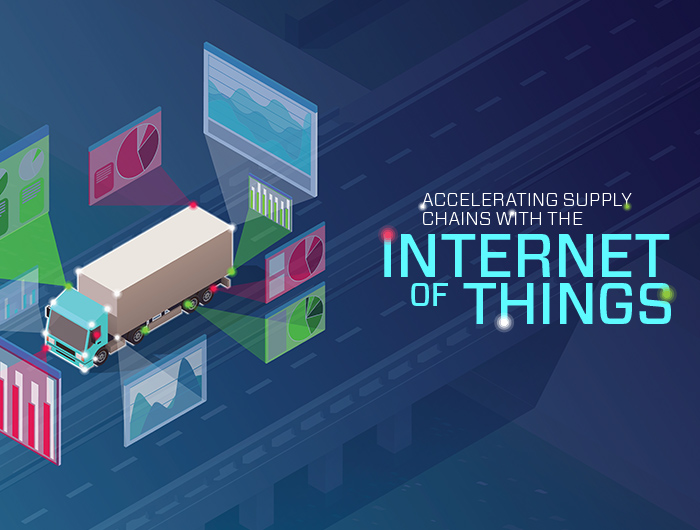The increased availability of quality data and exciting technological advancements are outdating traditional supply chain organizational structures. Blockchain is changing the way materials are tracked from the source to end use. Robotic process automation is eliminating the need for humans to handle repetitive tasks. And the sharing and gig economies are transforming conventional workflows.
Functional governance models, the predictability of outcomes, product and service quality, risk management, documentation management, and more are soon going to look radically different. Developing a supply chain organization that can compete under these challenging circumstances therefore should be foremost on the minds of industry professionals. A network that is prepared will gain a significant competitive advantage over its competitors.
Unfortunately, supply chain’s generic response to shifts such as these has been to add more layers to the existing organization in order to manage complexity and reduce risk. These layers take the form of additional processes, unwieldy governance structures, added employees and more departments. To maximize the opportunities of digital transformation, supply chain needs a new philosophy.
ENABLING THE SHIFT
Most studies evaluating the future of supply chain agree that technological advancements, changing business needs and regulatory risks are the biggest issues facing the industry. This is borne out in multiple voice-of-the business surveys as well. Regrettably, proposed remedies invariably, once again, revolve around adding more layers to the organization.
There are two possible solutions to any change- management problem: an incremental response for an incremental change or a radical solution for a radical change. The dramatic shifts taking place as we enter the world of digital supply chain mean that we must choose the radical model. Following are strategies to make this work at your supply chain organization.
Design the network. The business outcomes you are seeking to deliver ideally should come from the company’s mission statement and long-term business plan. Create an internal organizational structure that delivers these outcomes with the lowest degree of separation from stakeholders. It also is necessary that the structure be designed in an iterative, agile manner, instead of the conventional build-operate-maintain model. Use the following guide to reevaluate your organizational framework.
1. Design internal processes by linking organizational nodes and technologies directly to business outcomes.
2. Leverage the power of your ecosystem. Think of solution providers as nodes within the broader network. Organize suppliers based upon spend and risk potential.
3. Evaluate the degree of separation between a business user and the outcome for each network node with a view to shortening the need-to-fulfillment time frame.
Consider a business that relies on 10 suppliers to manage a supply chain that delivers assembled products to its customers. Each group that uses parts from one of the 10 suppliers is front-line. To get the parts needed to begin assembly
- front-line teams make a part request in a new tool that the sourcing group is using for its activities
- sourcing then interacts with legal to prepare the contract
- ongoing supplier-management tasks are handled by the contractor-relations group
- enterprise resources planning entries are managed by a completely different team.
Of course, all of these internal layers extend the need-to- fulfillment time frame for the front-line group significantly.
On the other hand, the ideal digital supply chain would enable team members to make requests in the shortest possible time frame, just like ordering products from Amazon or getting a ride from Uber. Consider the improvements if this company instead used an internal team to manage the top three suppliers because of the importance of the parts supplied, a third-party logistics (3PL) or third-party procurement provider to manage the next five, and a shared services center to manage the last two.
Moreover, could this company use an automated tool to handle tasks such as contracting for low-risk parts, expediting, invoicing, ordering and the like? Might the business be better able to maximize the strengths of its supplier network, such as by leveraging a 3PL with strong forecasting, scheduling and dispatching skills to manage carriers? Likewise, is it really necessary to manage warehousing when a freight forwarder could use an outcome-driven contract instead by delivering products on a fixed schedule? Digital control tower tools also could help maintain visibility and ensure high performance levels.
Implement effective governance. Next, establish an effective governance mechanism — preferably one that involves business stakeholders. A governance mechanism that excludes the end users puts the supply chain function at risk of falling out of sync with the business. Consider the role of your internal stakeholders in ensuring that the right initiatives are being prioritized. Do they have a say in decisions that will affect their ability to execute?
Ensure consistent execution. Invest in a long-term approach to executing this strategy by ensuring that execution is paired with a well-thought-out transformational plan that revolves around continuous and consistent communication. Resist the urge to add layers to manage new risks. Your goal is to empower end users to rapidly satisfy business needs at the best value point. The need-to- fulfillment time frame is the key success metric.
Validate and adapt. Leverage technology to spot any variations from intended results. Invest in data- management tools and a process that helps you select the right partners — both internal and external — in order to rapidly respond to changes in your business environment. Frequently, organizations fail to recognize that external partners can be an effective means of measuring success against the broader industry. Execute the proposed changes over a five-to-seven-year period and in an agile manner. This will enable you to make small course corrections and ensure that the final structure is a fit for your business environment and organizational culture.
Start small, then scale up initiatives. Adapt as needed to certify that business goals are being met. Any digital supply chain transformation must be accompanied by a fail-forward mindset. Think of a baby growing into a toddler: Solve problems related to crawling first; then walking; and, lastly, running. Babies fall as they learn to crawl, but they learn from these tumbles and adapt skills that enable them to do better next time. This philosophy will ensure that your digital initiatives are delivering value to end users and providing the necessary return on investment.
REFLECT ON THE RISKS
As with any radical change, there are several risks associated with this proposed approach, which must be anticipated and addressed:
- Get the design framework right. Starting the process with a poor understanding of business outcomes will lead to an organizational design that is unfit for the needs of the organization.
- Be certain that the final design is flexible enough to adapt to any changes in the environment.
- Prepare your supplier base. Your ability to deploy these changes will be contingent upon selection of the right business partners with the right mix of capabilities. If your ecosystem is not in step with your proposed strategy, reevaluate your partners or invest in upgrading their capabilities.
- Not all available technologies will be a fit for your business. Take a build-versus-buy approach, and be sure technology deployment time frames are factored into the execution strategy.
- Overcome resistance to change by focusing on benefits to the organization and always being candid about potential risks.
- Prepare employees. Supply chain organizations on the verge of technological evolution often discover scarcity of talent to be a major hindrance to success. Review the skill sets required for future needs, and invest in building capabilities across the ecosystem.
- There always is the possibility of external changes (raw material prices, regulations, the economy and so on) disrupting even the best-laid plans. Adopt an agile approach to your redesign by considering multiple deployment sprints.
In the end, no two organizational designs will look alike. Your eventual network will rest on your particular business needs, ecosystem capabilities, technologies, tools, risks and the broader economic environment.
REALIZE THE VALUE
When your supply chain is responsive and flexible, it can react to marketplace shifts more quickly, reduce its cost to serve, minimize personnel fluctuations and use its core competencies in a highly effective manner. Plus, it will become outcome-driven, rather than process-driven.
Meanwhile, thanks to the effective application of exciting new technologies — such as machine learning, robotic process automation and artificial intelligence —your business will be able to automate repetitive tasks and dedicate staff time to more value-added projects. Finally, heightened collaboration and data sharing among stakeholders will provide everyone with a holistic picture of the supply chain and ensure that this end-to-end, data value chain benefits the entire enterprise.



